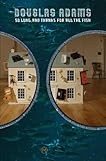Carpenter ants are commonly incorrectly identified and misunderstood pests. Knowing a few things about what they eat, how they behave, and what they look like will help you get rid of carpenter ants and keep them out of your house for good. The following are some commonly asked questions that will help you better understand carpenter ants:
Q: What size are carpenter ants?
A: Carpenter ants vary in size from as small as a quarter of an inch and as large as an entire inch. Mostly they are larger than regular ants, which will help you tell them apart from other ants and bugs.
Q: How are carpenter ants different from termites?
A: Termites eat wood, whereas carpenter ants only remove the wood to build their homes and nesting sites. It is a common misconception that carpenter ants eat wood; they do not. A good way to determine if you have termites or carpenter ants is by looking at the affected wood. Because termites eat wood, they do not leave a trail of sawdust or any remaining wood. Carpenter ants, on the other hand, will leave small neat piles of the sawdust they have excavated.
Q: What do carpenter ants eat?
A: A carpenter ant’s diet is very similar to other ants. Their affinity for sugars, syrups, and crumbs is often a factor in leading them into your home. While in nature they feed on dead insects mostly, they heavily forage on food scraps, sweets, meat, and fat.
Q: Where do carpenter ants live?
A: Carpenter ants live both indoors and outdoors. They prefer moist, woody habitats such as in dead and rotting wood. Inside wood they build tunnels, called galleries, which interconnect and allow them to freely move from place to place within the wood. High moisture areas are most likely to by infested by carpenter ants.
Q: How do I keep carpenter ants out of my house?
A: The best way to keep your home free of carpenter ants is to avoid moisture build-up, and treat areas that are high moisture. These areas usually include wood surrounding pipes, rain gutters, water-using appliances such as your washing machine and dishwasher. Make sure your air circulation system is working properly and that humidity is not building up in certain areas of your home. Look for dead wood on your home and be sure to remove and replace it as soon as you notice it.
For more information about carpenter ant control please visit www.domyownpestcontrol.com.


























































Thanks I really like this post, keep on posting because I like it so much it seems like an info I read about Carpenter Ants Queens NY.
ReplyDelete